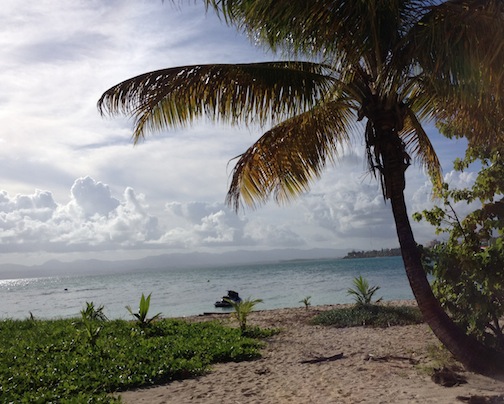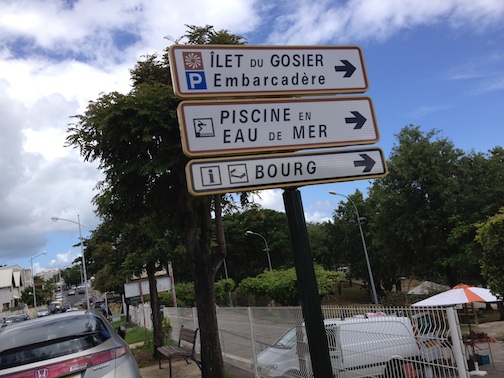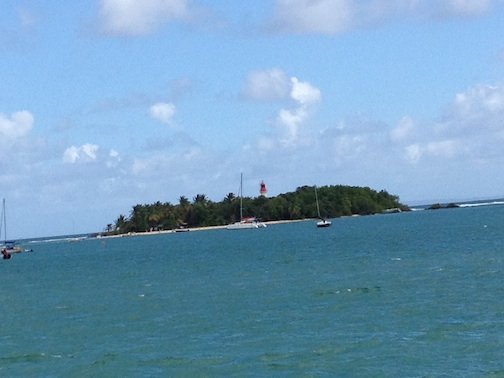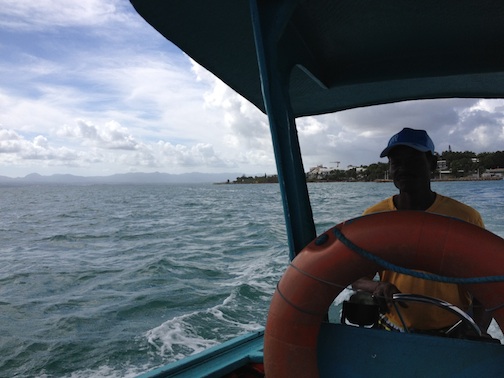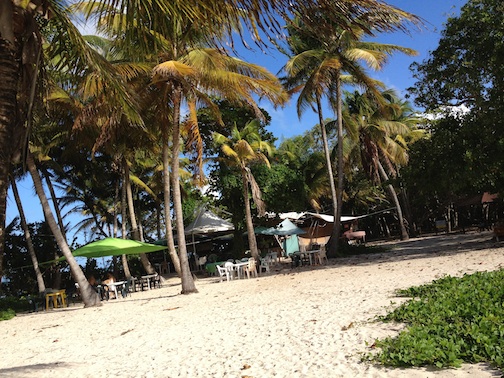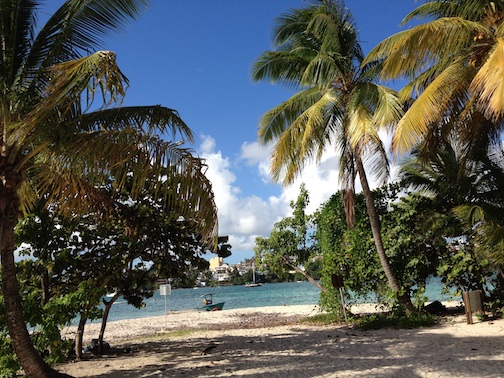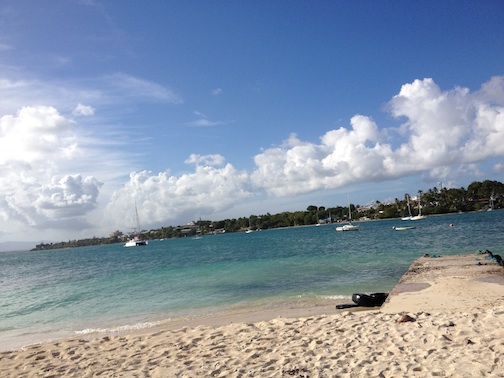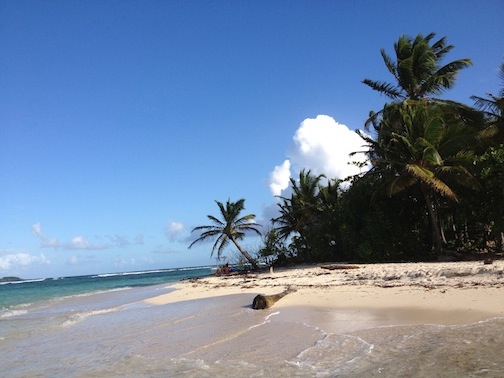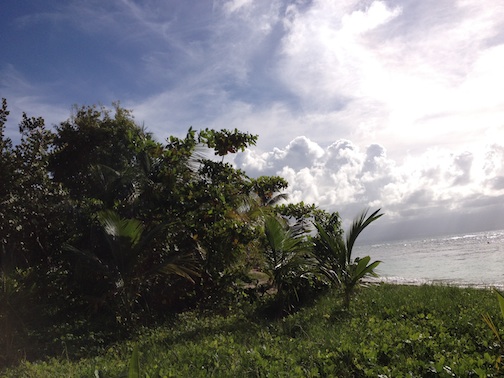Above: Ilet du Gosier (All Photos by CJ)
By Alexander Britell
GOSIER, GUADELOUPE — This quiet fishing village about 15 minutes east of the bustle of Pointe-a-Pitre typifies Guadeloupe: developed but traditional; quintessentially French but with a decidedly Creole flavour.
Above: the Friday afternoon market in Gosier
And one of Guadeloupe’s best-kept secrets is a tiny islet just off the coast — Ilet du Gosier.
It’s a rather well-formed patch of green viewed from afar, about 500 metres from the small harbour in Gosier, and about four hectares in size.
Today, I’ve personally hired Jean-Luc, a local fisherman who will pilot my boat to the islet.
That’s hyperbole, of course. Jean-Luc is one of a host of local fishermen who operate an informal shuttle service between the dock in Gosier and Ilet du Gosier, for the exorbitant sum of three euros.
Above: Jean Luc’s colourful vessel
It’s about three minutes until I arrive, and find that I’ve suddenly been stranded on a largely-deserted isle. It’s not a mirage, though — just ashore is a picture-perfect rum bar, a place to channel one’s inner Robinson Crusoe.
Above: Ti’ Robinson
Is this a real bar? And how do they get the ice here?
Fittingly, it’s called Ti’ Robinson (“little Robinson”), a nod to the literary hero — and to the island’s size.
Magalie and Jocelyn Lemaille have been running the bar and restaurant since 1989.
Though no one can live on the island (and camping is apparently prohibited, and the only permanent inhabitant is a lighthouse), the pair brings a ration of rhum (Guadeloupe’s Rhum Bologne seems to be the rhum of choice), food and ice, using solar energy to power the shack.
While Ti Robinson is a tongue-in-cheek name, and though mainland Guadeloupe is in plain sight, the islet does really manage to replicate the feeling of extreme remoteness.
Compared even to the laid-back Gosier, it’s extremely calm, with the only sounds the muted conversations of a usually slim contingent of swimmers and snorkelers; the hours feel endless — as does the rhum.
As it turns out, Amerindians long sojourned here during the early part of the second millennium, with archaeological remains dating as far back as the 10th century.
Today, of course, all settlement is of the temporary nature — until the last boat comes to take you back to shore.
You’ll quickly find that you hope it never comes.
